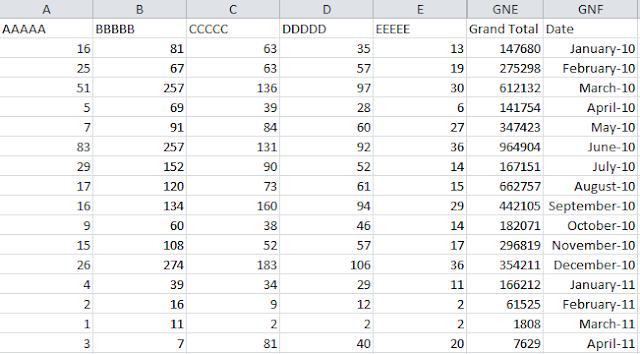Dis-aggregated hardware
This post focuses on dis-aggregated hardware follows my earlier post Open Source Networking: a hierarchical approach.
Hardware dis-aggregation is an important aspect of open networking. Essentially, dis-aggregated hardware involves software being separated from the underlying hardware. Similar to a PC or a server where you can boot with a Linux installer CD to Linux, you are able to boot dis-aggregated hardware with an Operating System (OS) installer and install an operating system on it. Most commercial vendors bundle their hardware with software which means you cannot modify the software or change the OS that it comes loaded with. Open, dis-aggregated hardware however does not have this restriction.
Take for example, Ethernet switches which have two main components:
The most simple form of a disaggregated networking hardware is a standard bare metal x86 machine with multiple network adapter cards. You can install a Linux OS on that PC, activate routing, and transform it into a firewall or a router.
There are two main open source projects that are driving developments in the dis-aggregated hardware space:
In 2011, Facebook shared its designs with the public and—along with Intel and Rackspace, Goldman Sachs and Andy Bechtolsheim—launched the Open Compute Project (OCP) and incorporated the Open Compute Project Foundation. There are multiple project workgroups within OCP, each including a project charter and a team working towards producing and enhancing the open source technologies within that project. Currently, these workgroups are:
Hardware dis-aggregation is an important aspect of open networking. Essentially, dis-aggregated hardware involves software being separated from the underlying hardware. Similar to a PC or a server where you can boot with a Linux installer CD to Linux, you are able to boot dis-aggregated hardware with an Operating System (OS) installer and install an operating system on it. Most commercial vendors bundle their hardware with software which means you cannot modify the software or change the OS that it comes loaded with. Open, dis-aggregated hardware however does not have this restriction.
Take for example, Ethernet switches which have two main components:
- A packet switching/processing ASIC chipset controller
- A CPU which hosts the software / firmware and the packet switching ASIC.
 |
| Source: Reza Toghraee and The Linux Foundation |
The most simple form of a disaggregated networking hardware is a standard bare metal x86 machine with multiple network adapter cards. You can install a Linux OS on that PC, activate routing, and transform it into a firewall or a router.
There are two main open source projects that are driving developments in the dis-aggregated hardware space:
- Open Compute Project; and
- Telecom Infra Project.
Open Compute Project
In 2009, as Facebook was growing exponentially, the company realized that it had to rethink its infrastructure to accommodate the huge influx of new people and data, and also control costs and energy consumption. Facebook then started a project to design the world’s most energy efficient data center, one that could handle unprecedented scale at the lowest possible cost. Two years and a small team of engineers later, they built a data center from the ground up at Prineville, Oregon including software, servers, racks, power supplies, and cooling. It was 38% more energy efficient to build and 24% less expensive to run than the company’s previous facilities—and has led to even greater innovation.In 2011, Facebook shared its designs with the public and—along with Intel and Rackspace, Goldman Sachs and Andy Bechtolsheim—launched the Open Compute Project (OCP) and incorporated the Open Compute Project Foundation. There are multiple project workgroups within OCP, each including a project charter and a team working towards producing and enhancing the open source technologies within that project. Currently, these workgroups are:
- Data Center Facility: focuses on maximizing mechanical performance and thermal and electrical efficiency
- Hardware Management: incorporates a set of existing tools and best practices and leverages existing tools for remote machine management
- Networking: creating a set of technologies that are dis-aggregated and fully open, allowing for rapid innovation in the network space
- Open System Firmware: creating and deploying, at scale, an open source hardware platform initialization and OS load firmware optimized for web-scale cloud hardware
- Rack & Power: focuses on rack standards that are designed for data centers, integrating the rack into the data center infrastructure
- Security: creates designs and specifications to enable software security for all IT gear through collaboration with the wider Open Compute community
- Server: provides standardized server system specifications for scale computing
- Storage: focuses on chassis and sleds, components and peripherals, networked enabled storage and compatibility solutions
- Telco: enlists participants from telecom companies and carriers as well as sub systems, software, board and semiconductor suppliers who are seeking to use data center infrastructure to deliver IT services
Telecom Infra Project
Similar to the Open
Compute Project, which addresses open source hardware and software used
to build data centers and enterprise IT, the Telecom Infra Project (TIP) is a
workgroup meant to create open source standards for telecommunication
and service provider companies. The Telecom Infra Project includes
multiple project groups:
- Access projects: working to identify and create innovative infrastructure solutions, technologies, and methodologies to make it easier to connect people to the internet. Access is focused on removing some of the blockers that can make the connection to the end user difficult.
- Transport projects: to keep the pace of exponential growth in network traffic, better backhaul is essential. Our transport project groups are addressing the scalability, fast convergence, ease of configuration, and extensibility challenges in wireless and wired backhaul.
- Core & Services: the most significant costs associated with a network are the ongoing costs of operations and maintenance. The core and services project groups are simplifying the core network architecture and improving efficiency and flexibility while reducing ongoing costs associated with keeping a network up and running.
My next blog will focus on IO Abstraction and Datapath.



Lovely blog, also check this info graphic on Big Data by Mizoram University. https://bit.ly/3GvHatD
ReplyDelete